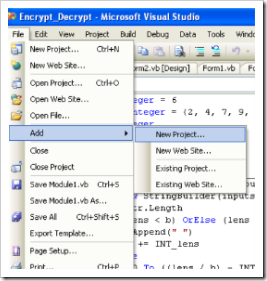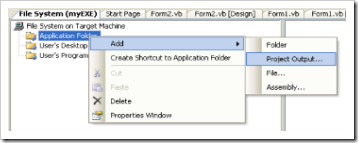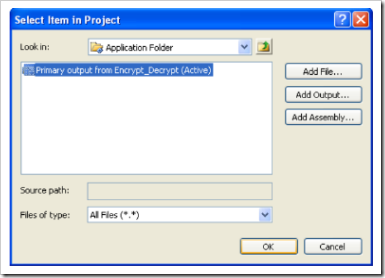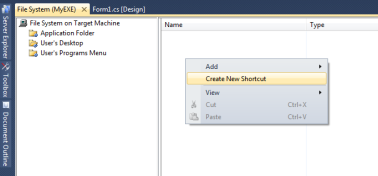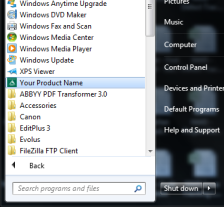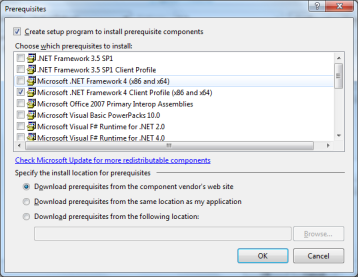If you've been working with databases for a while, chances are you've
heard the term normalization. Perhaps someone's asked you "Is that
database normalized?" or "Is that in BCNF?" All too often, the reply is
"Uh, yeah." Normalization is often brushed aside as a luxury that only
academics have time for. However, knowing the principles of
normalization and applying them to your daily database design tasks
really isn't all that complicated and it could drastically improve the
performance of your DBMS.
In this article, we'll introduce the concept of normalization and take a
brief look at the most common normal forms. Future articles will
provide in-depth explorations of the normalization process.
The Normal Forms
The database community has developed a series
of guidelines for ensuring that databases are normalized. These are
referred to as normal forms and are numbered from one (the lowest form
of normalization, referred to as first normal form or 1NF) through five
(fifth normal form or 5NF). In practical applications, you'll often see
1NF, 2NF, and 3NF along with the occasional 4NF. Fifth normal form is
very rarely seen and won't be discussed in this article.
Before we begin our discussion of the normal forms, it's important to
point out that they are guidelines and guidelines only. Occasionally, it
becomes necessary to stray from them to meet practical business
requirements. However, when variations take place, it's extremely
important to evaluate any possible ramifications they could have on your
system and account for possible inconsistencies. That said, let's
explore the normal forms.
First Normal Form (1NF)
First Normal Form (1NF) sets the very basic rules for an organized database:
- Eliminate duplicative columns from the same table.
- Create separate tables for each group of related data and identify each row with a unique column (the primary key).
What do these rules mean when contemplating the practical design of a database? It’s actually quite simple.
The first rule dictates that we must not duplicate data within the same
row of a table. Within the database community, this concept is
referred to as the atomicity of a table. Tables that comply with this
rule are said to be atomic. Let’s explore this principle with a classic
example – a table within a human resources database that stores the
manager-subordinate relationship. For the purposes of our example,
we’ll impose the business rule that each manager may have one or more
subordinates while each subordinate may have only one manager.
Intuitively, when creating a list or spreadsheet to track this information, we might create a table with the following fields:
- Manager
- Subordinate1
- Subordinate2
- Subordinate3
- Subordinate4
However, recall the first rule imposed by 1NF: eliminate
duplicative columns from the same table. Clearly, the
Subordinate1-Subordinate4 columns are duplicative. Take a moment and
ponder the problems raised by this scenario. If a manager only has one
subordinate – the Subordinate2-Subordinate4 columns are simply wasted
storage space (a precious database commodity). Furthermore, imagine
the case where a manager already has 4 subordinates – what happens if
she takes on another employee? The whole table structure would require
modification.
At this point, a second bright idea usually occurs to database novices:
We don’t want to have more than one column and we want to allow for a
flexible amount of data storage. Let’s try something like this:
where the Subordinates field contains multiple entries in the form "Mary, Bill, Joe"
This solution is closer, but it also falls short of the mark. The
subordinates column is still duplicative and non-atomic. What happens
when we need to add or remove a subordinate? We need to read and write
the entire contents of the table. That’s not a big deal in this
situation, but what if one manager had one hundred employees? Also, it
complicates the process of selecting data from the database in future
queries.
Here’s a table that satisfies the first rule of 1NF:
In this case, each subordinate has a single entry, but managers may have multiple entries.
Now, what about the second rule: identify each row with a unique column
or set of columns (the primary key)? You might take a look at the
table above and suggest the use of the subordinate column as a primary
key. In fact, the subordinate column is a good candidate for a primary
key due to the fact that our business rules specified that each
subordinate may have only one manager. However, the data that we’ve
chosen to store in our table makes this a less than ideal solution.
What happens if we hire another employee named Jim? How do we store his
manager-subordinate relationship in the database?
It’s best to use a truly unique identifier (such as an employee ID) as a primary key. Our final table would look like this:
- Manager ID
- Subordinate ID
Now, our table is in first normal form! If you'd like to continue
learning about normalization, read the other articles in this series:
Second Normal Form (2NF)
Over the past month, we've looked at several aspects of normalizing a
database table. First, we discussed the basic principles of database
normalization. Last time, we explored the basic requirements laid down
by the first normal form (1NF). Now, let's continue our journey and
cover the principles of second normal form (2NF).
Recall the general requirements of 2NF:
- Remove subsets of data that apply to multiple rows of a table and place them in separate tables.
- Create relationships between these new tables and their predecessors through the use of foreign keys.
These rules can be summarized in a simple statement: 2NF attempts
to reduce the amount of redundant data in a table by extracting it,
placing it in new table(s) and creating relationships between those
tables.
Let's look at an example. Imagine an online store that maintains
customer information in a database. They might have a single table
called Customers with the following elements:
- CustNum
- FirstName
- LastName
- Address
- City
- State
- ZIP
A brief look at this table reveals a small amount of redundant
data. We're storing the "Sea Cliff, NY 11579" and "Miami, FL 33157"
entries twice each. Now, that might not seem like too much added storage
in our simple example, but imagine the wasted space if we had
thousands of rows in our table. Additionally, if the ZIP code for Sea
Cliff were to change, we'd need to make that change in many places
throughout the database.
In a 2NF-compliant database structure, this redundant information is
extracted and stored in a separate table. Our new table (let's call it
ZIPs) might have the following fields:
If we want to be super-efficient, we can even fill this table in
advance -- the post office provides a directory of all valid ZIP codes
and their city/state relationships. Surely, you've encountered a
situation where this type of database was utilized. Someone taking an
order might have asked you for your ZIP code first and then knew the
city and state you were calling from. This type of arrangement reduces
operator error and increases efficiency.
Now that we've removed the duplicative data from the Customers table,
we've satisfied the first rule of second normal form. We still need to
use a foreign key to tie the two tables together. We'll use the ZIP code
(the primary key from the ZIPs table) to create that relationship.
Here's our new Customers table:
- CustNum
- FirstName
- LastName
- Address
- ZIP
We've now minimized the amount of redundant information stored within the database and our structure is in second normal form!
Third Normal Form (3NF)
There are two basic requirements for a database to be in third normal form:
- Already meet the requirements of both 1NF and 2NF
- Remove columns that are not fully dependent upon the primary key.
Imagine that we have a table of widget orders that contains the following attributes:
- Order Number
- Customer Number
- Unit Price
- Quantity
- Total
Remember, our first requirement is that the table must satisfy the
requirements of 1NF and 2NF. Are there any duplicative columns? No.
Do we have a primary key? Yes, the order number. Therefore, we
satisfy the requirements of 1NF. Are there any subsets of data that
apply to multiple rows? No, so we also satisfy the requirements of
2NF.
Now, are all of the columns fully dependent upon the primary key? The
customer number varies with the order number and it doesn't appear to
depend upon any of the other fields. What about the unit price? This
field could be dependent upon the customer number in a situation where
we charged each customer a set price. However, looking at the data
above, it appears we sometimes charge the same customer different
prices. Therefore, the unit price is fully dependent upon the order
number. The quantity of items also varies from order to order, so we're
OK there.
What about the total? It looks like we might be in trouble here. The
total can be derived by multiplying the unit price by the quantity,
therefore it's not fully dependent upon the primary key. We must remove
it from the table to comply with the third normal form. Perhaps we
use the following attributes:
- Order Number
- Customer Number
- Unit Price
- Quantity
Now our table is in 3NF. But, you might ask, what about the total?
This is a derived field and it's best not to store it in the database
at all. We can simply compute it "on the fly" when performing
database queries. For example, we might have previously used this
query to retrieve order numbers and totals:
SELECT OrderNumber, Total
FROM WidgetOrders
We can now use the following query:
SELECT OrderNumber, UnitPrice * Quantity AS Total
FROM WidgetOrders
to achieve the same results without violating normalization rules.
Boyce-Codd Normal Form (BCNF)
Definition: A
relation is in Boyce-Codd Normal Form (BCNF) if every determinant is a
candidate key. (See the links in the box at right for definitions of
determinant and candidate key.)
Also Known As: BCNF
Examples:
Conisder
a database table that stores employee information and has the
attributes employee_id, first_name, last_name, title. In this table,
the field employee_id determines first_name and last_name. Similarly,
the tuple (first_name, last_name) determines employee_id.
Fourth Normal Form (4NF)
Finally, fourth normal form (4NF) has one additional requirement:
- Meet all the requirements of the third normal form.
- A relation is in 4NF if it has no multi-valued dependencies.
Remember, these normalization guidelines are cumulative. For a
database to be in 2NF, it must first fulfill all the criteria of a 1NF
database.
Multivalued Dependency
Definition: Multivalued dependencies occur when the presence of one or more rows in a table implies the presence of one or more other rows in that same table.
For more detail, read What is a Database Dependency?
Examples:
For
example, imagine a car company that manufactures many models of car,
but always makes both red and blue colors of each model. If you have a
table that contains the model name, color and year of each car the
company manufactures, there is a multivalued dependency in that table.
If there is a row for a certain model name and year in blue, there must
also be a similar row corresponding to the red version of that same
car.
Should I Normalize?
While database normalization is often a good
idea, it's not an absolute requirement. In fact, there are some cases
where deliberately violating the rules of normalization is a good
practice. For more on this topic, read






